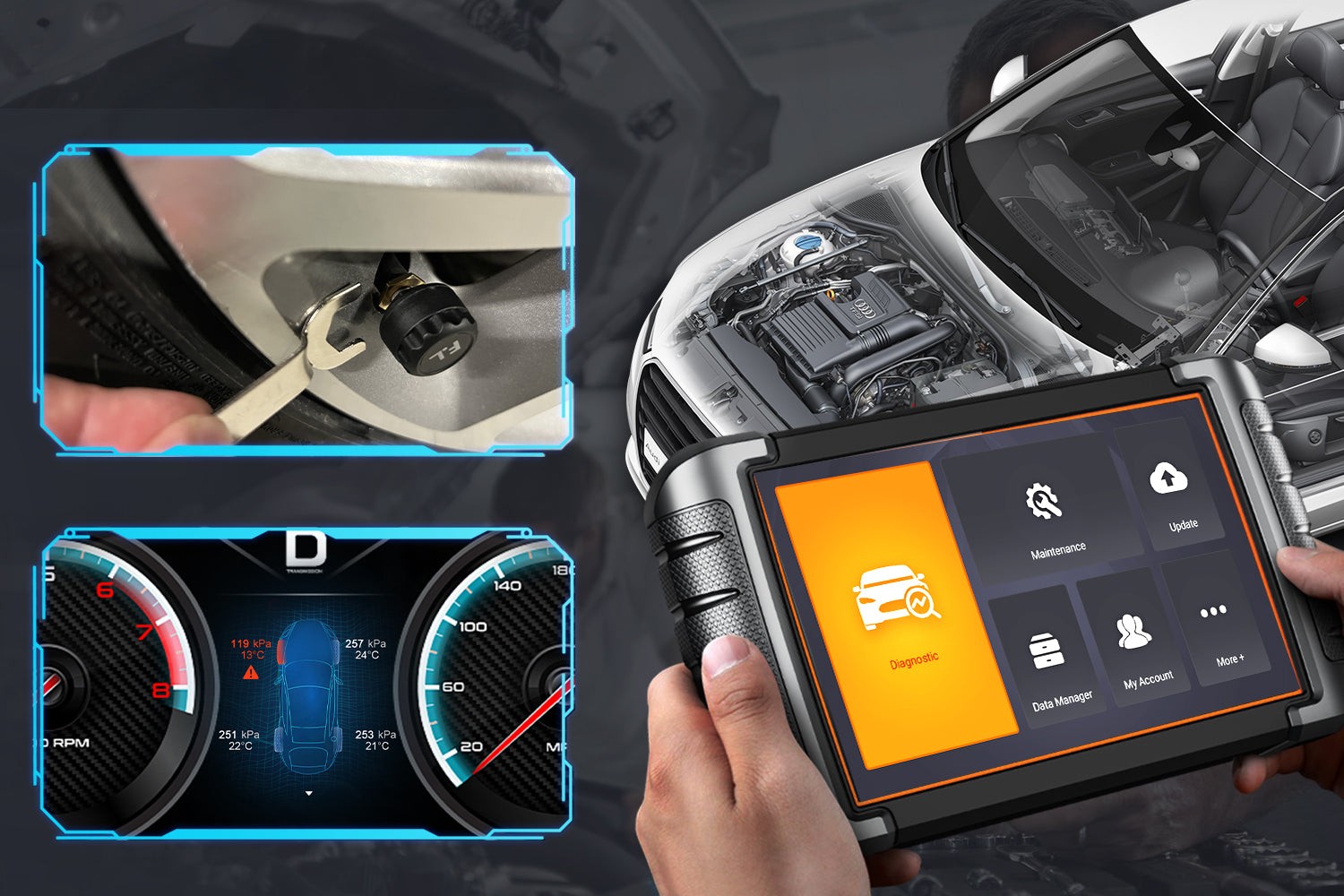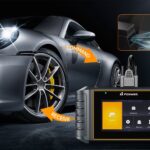For car owners who are keen on maintaining their vehicle’s health, OBD2 scanners have become indispensable tools. These devices offer a window into your car’s onboard computer, helping to diagnose issues early and potentially save significant repair costs. A common question among users is: “Can You Leave Obd2 Plugged In All The Time?” While the idea of constant monitoring is appealing, there are several factors to consider before you decide to keep your scanner permanently connected.
While it’s technically possible to leave your OBD2 scanner plugged in, it’s not always the best practice. There are potential downsides, including power drain and possible impacts on your car’s electronics. Let’s delve into the benefits and risks to help you make an informed decision about leaving your OBD2 scanner plugged in.
The Upsides of Continuous OBD2 Scanner Connection
Leaving your OBD2 scanner connected offers several compelling advantages, primarily centered around real-time vehicle monitoring and convenience.
Real-Time Vehicle Performance Monitoring
One of the most significant benefits is the ability to continuously monitor your vehicle’s performance. An OBD2 scanner, when plugged in, can track a wide array of parameters – from engine health metrics to fuel efficiency and emission levels. This constant vigilance allows for the immediate detection of Diagnostic Trouble Codes (DTCs). Early identification of these codes is crucial as it enables timely maintenance interventions, potentially preventing minor issues from escalating into major, costly repairs.
Imagine, for instance, receiving an early warning about a malfunctioning oxygen sensor. Addressing this promptly can prevent more severe engine damage and maintain optimal fuel economy. This proactive approach to vehicle maintenance can save you money and extend the life of your car.
Enhanced Convenience and Time-Saving
For those who frequently use their OBD2 scanners, leaving it plugged in eliminates the repetitive task of connecting and disconnecting the device. This convenience is particularly valuable for users who regularly perform diagnostics or monitor vehicle parameters. The scanner is always ready to provide instant insights without any setup, streamlining your vehicle maintenance routine.
Data Logging and Performance Tracking
Advanced OBD2 scanners offer real-time data logging and analysis capabilities. This feature is especially beneficial for car enthusiasts interested in tracking their vehicle’s performance over time or fleet managers overseeing multiple vehicles. By continuously logging data, you can analyze trends, identify performance changes, and optimize driving habits for better fuel economy and vehicle longevity.
Smartphone Integration and Instant Alerts
Many modern OBD2 scanners seamlessly integrate with mobile apps, delivering vehicle data and alerts directly to your smartphone. This connectivity provides easy access to vital vehicle information, enabling you to make informed decisions about maintenance and vehicle usage. Instant alerts for potential issues can be particularly useful, allowing you to address problems quickly, even on the go.
Potential Downsides and Concerns of Leaving OBD2 Scanners Plugged In
While the benefits of continuous connection are clear, it’s equally important to be aware of the potential risks and concerns associated with leaving your OBD2 scanner plugged in all the time.
Battery Drain Issues
One of the primary concerns is battery drain. Even when your car is turned off, most OBD2 scanners draw a small amount of power. Over time, this continuous draw can deplete your car battery, especially if the vehicle is parked for extended periods.
If you leave your car parked for a month or more with an OBD2 scanner connected, you might return to find a dead battery. This risk is amplified in vehicles with older batteries or those that are not driven frequently. Continuous power drain increases the likelihood of encountering battery-related problems, which can be inconvenient and costly.
Potential for Electronic Interference and Malfunction
There’s a potential risk of interference between a permanently connected OBD2 scanner and your vehicle’s electronic systems. While not common, this interference can, in some cases, lead to malfunctions or erratic behavior, particularly in older vehicles with more sensitive electronics.
Moreover, constantly having a device plugged into the OBD2 port could, theoretically, contribute to wear and tear on the port itself over extended periods. While OBD2 ports are designed for repeated use, continuous connection might accelerate wear, potentially leading to connectivity issues in the long run.
Security and Physical Risks
Leaving an OBD2 scanner visibly plugged in can also pose security risks. An exposed scanner might attract unwanted attention, making it a target for theft or tampering. Individuals with malicious intent could potentially access your vehicle’s diagnostic system through an exposed OBD2 port.
Furthermore, a constantly connected scanner is exposed to environmental factors inside your car, such as extreme temperatures and humidity. These conditions can potentially shorten the lifespan of the scanner over time, especially for devices not designed for continuous operation in such environments.
Understanding OBD2 Scanner Power Consumption
To better assess the risk of battery drain, it’s essential to understand the power consumption of OBD2 scanners. Typically, these devices consume a minimal amount of power, often measured in milliamps (mA). However, even a small continuous draw can accumulate over time, especially when the vehicle is not running and the alternator is not replenishing the battery charge.
While a draw of 10 mA might seem insignificant, over a week of inactivity, it can draw a noticeable amount of charge from your battery. The actual power consumption can vary depending on the OBD2 scanner model. Advanced scanners with features like Wi-Fi or Bluetooth connectivity may consume more power than basic models due to the energy required for wireless communication and additional functionalities.
The impact on your car battery depends on several factors, including the battery’s health, the frequency of vehicle use, and the specific power consumption of the OBD2 scanner. A healthy, fully charged battery in a vehicle that is driven daily might experience negligible impact from a low-power OBD2 scanner. However, in vehicles driven infrequently or with older batteries, the drain can become more significant.
For vehicles used primarily for short trips or occasionally, the alternator may not have sufficient time to fully recharge the battery, compounding the drain caused by a continuously connected OBD2 scanner. This scenario increases the risk of battery depletion over time.
Manufacturer Recommendations: To Plug or Unplug?
Considering the potential downsides, what do vehicle and OBD2 scanner manufacturers recommend? The general consensus is leaning towards disconnecting the OBD2 scanner after use rather than leaving it plugged in continuously.
Most car manufacturers do not advise leaving diagnostic tools connected when not in use. Their recommendations often emphasize using OBD2 scanners for diagnostics as needed and then disconnecting them to prevent potential battery drain or electronic interference.
Similarly, many OBD2 scanner manufacturers recommend disconnecting basic models after each use. This practice helps prolong battery life and minimizes the risk of potential issues with both the scanner and the vehicle’s electrical system.
However, it’s worth noting that some advanced OBD2 scanners are designed with power-saving features to mitigate battery drain. These scanners often incorporate sleep modes that significantly reduce power consumption when the vehicle is off. A scanner with an effective sleep mode might draw only microamps in standby, posing a minimal risk to battery health. If you opt for continuous connection, choosing a scanner with such power-saving capabilities is advisable. Always consult the manufacturer’s specifications and recommendations for your specific OBD2 scanner model to understand its power usage and any precautions.
Best Practices for Operating OBD2 Scanners
If you decide to leave your OBD2 scanner plugged in for extended periods, implementing best practices is crucial to minimize potential risks and ensure optimal operation.
Secure Connection and Regular Checks
Ensure the OBD2 scanner is securely plugged into the OBD2 port and positioned so that it does not interfere with driving or access to vehicle controls. Regularly inspect the scanner and the OBD2 port for any signs of damage, wear, or malfunction.
Opt for Low-Power or Sleep Mode Scanners
When selecting an OBD2 scanner, consider models specifically designed for low power consumption or equipped with a sleep mode feature. These scanners minimize battery drain when the vehicle is off, making them more suitable for continuous connection if desired.
Disconnect During Extended Inactivity
For prolonged periods of vehicle inactivity, such as during vacations or long-term storage, it’s prudent to disconnect the OBD2 scanner. This precaution eliminates any risk of battery drain and reduces the potential for theft or tampering.
Consider Hardwiring with a Switch
For users who require frequent monitoring but are concerned about continuous power draw, consider hardwiring an OBD2 scanner with an on/off switch. This setup allows you to easily disable the scanner when not needed, providing greater control over power usage.
Utilize Temporary Diagnostic Solutions
For most users, a temporary diagnostic approach is often sufficient. Use your OBD2 scanner only when necessary for diagnostics or performance checks. This practice eliminates concerns about battery drain and wear on the OBD2 port while still providing access to valuable vehicle information when needed.
Invest in Advanced Power-Saving Scanners
If continuous monitoring is a priority, investing in an advanced OBD2 scanner with robust power-saving features or automatic shut-off is a worthwhile option. These devices are designed to minimize battery drain, allowing for longer diagnostic sessions without compromising battery health.
Professional Diagnostic Services
Consider leveraging professional diagnostic services for routine vehicle checks. Regular maintenance and diagnostic appointments with a qualified mechanic ensure your vehicle remains in optimal condition without the need for continuous OBD2 scanner connection.
Conclusion: Weighing the Pros and Cons of Continuous OBD2 Connection
In conclusion, while it is generally safe to leave an OBD2 scanner plugged in, it’s essential to be mindful of the potential for battery drain. The decision to leave your OBD2 scanner connected all the time should be based on a careful consideration of your specific needs, driving habits, and the characteristics of your OBD2 scanner and vehicle.
For most users, the best approach is to use the OBD2 scanner as needed for diagnostics and performance monitoring and then disconnect it. If continuous monitoring is desired, opt for an advanced scanner with power-saving features and implement best practices to mitigate any potential downsides. Staying informed about your scanner’s power consumption and following recommended usage guidelines will help you maximize the benefits of OBD2 technology while safeguarding your vehicle’s battery and electrical system for the long haul.
FAQs About Leaving OBD2 Scanners Plugged In
Will leaving an OBD2 scanner plugged in drain my car battery?
Yes, leaving an OBD2 scanner plugged in can potentially drain your car battery over time, especially if the vehicle is not used regularly. The extent of the drain depends on the scanner’s power consumption and the health of your battery.
Are there privacy risks associated with always-on OBD2 scanners?
Potentially, yes. Continuously connected OBD2 scanners, particularly those with wireless connectivity, could pose privacy risks if they transmit vehicle data without your explicit consent or knowledge. Always ensure your device and any associated apps are from reputable manufacturers and understand their data handling practices.
Can leaving an OBD2 scanner plugged in damage the OBD2 port?
Prolonged and continuous connection of an OBD2 scanner can contribute to wear and tear on the OBD2 port over time. While OBD2 ports are designed for repeated use, minimizing unnecessary continuous connection can help prolong the port’s lifespan and ensure reliable connectivity when you need it.

